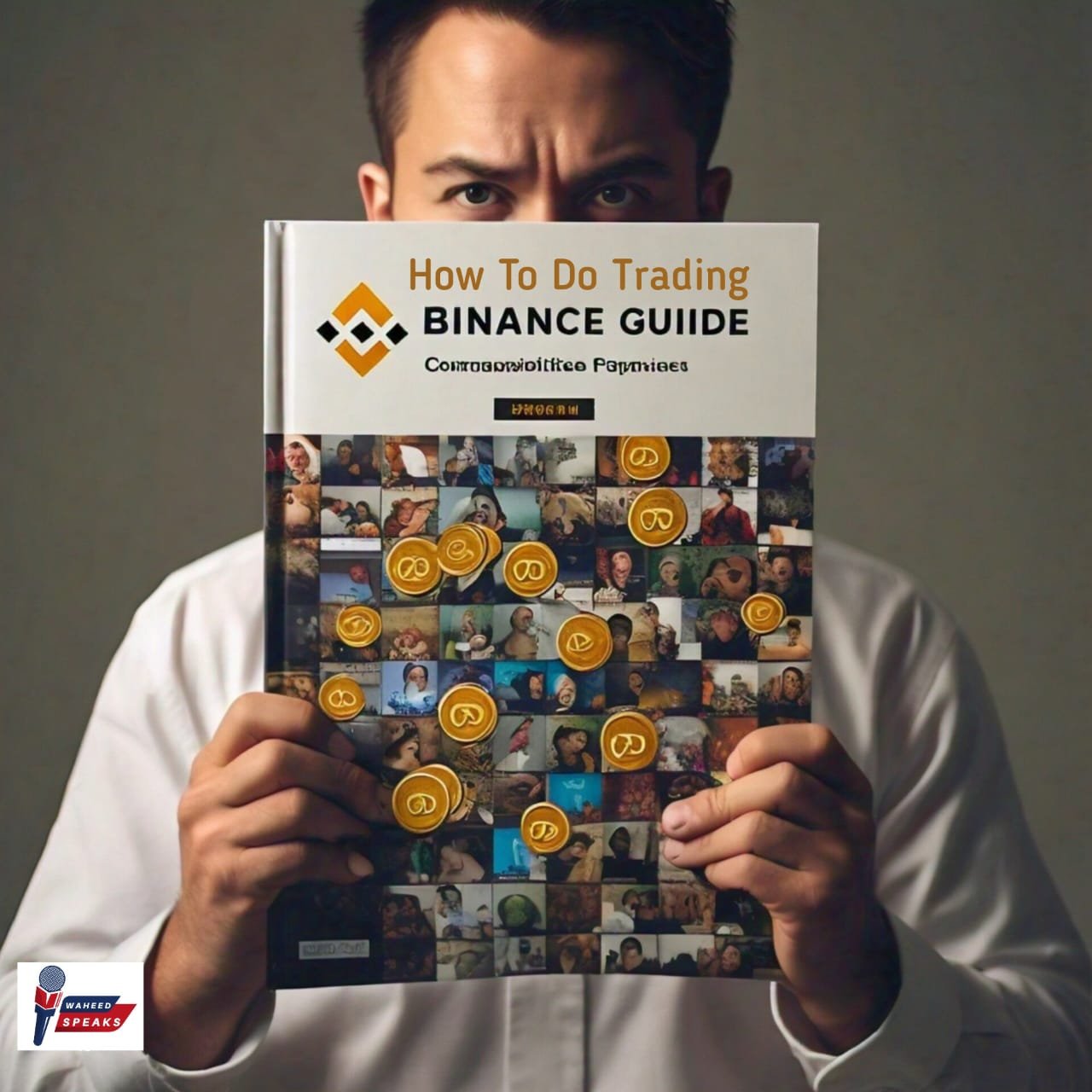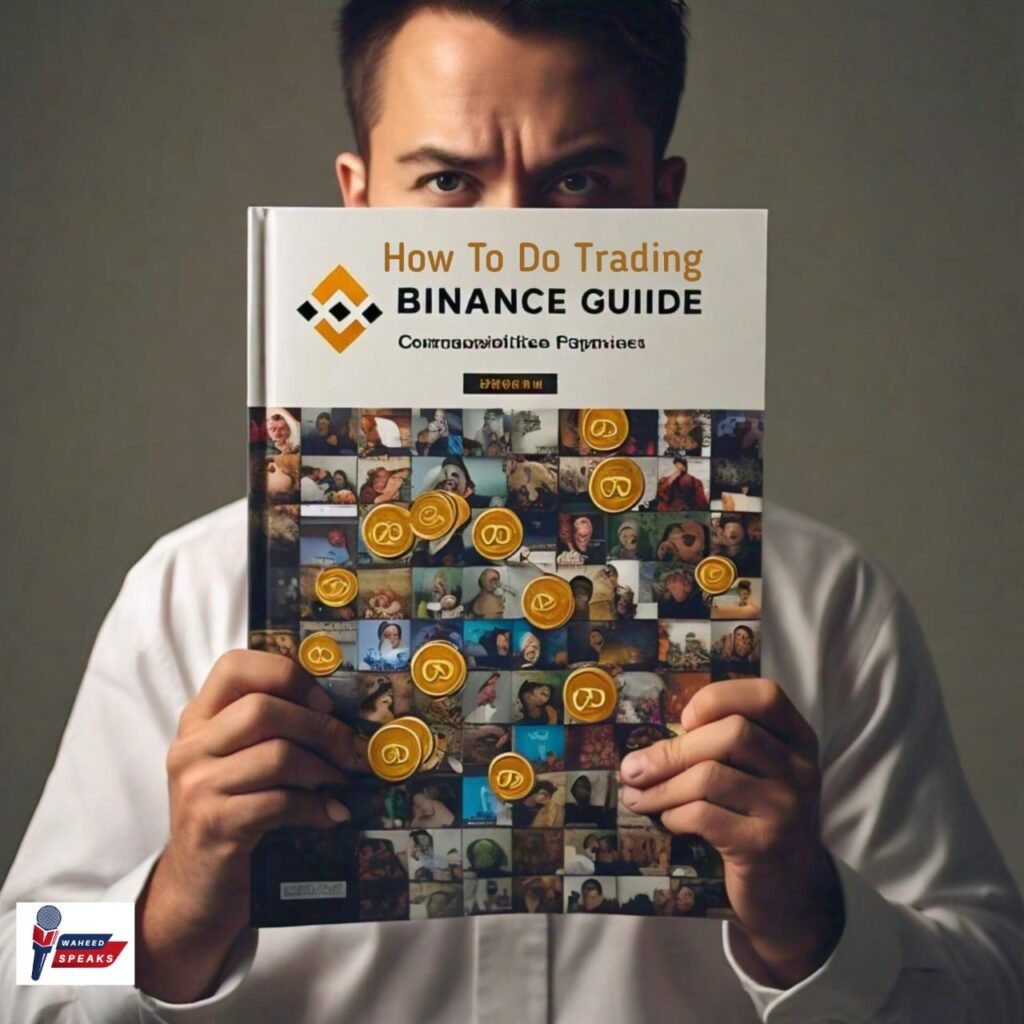How to Do Trading Online: A Comprehensive Guide for Binance Users
.

Introduction
Overview of Online Trading
Online trading has revolutionized the financial markets, making it accessible to anyone with an internet connection. It allows individuals to buy and sell various financial instruments such as stocks, currencies, and cryptocurrencies through online platforms. This democratization of trading has led to increased participation and liquidity in the markets.
Relevance and Importance of Online Trading
The importance of online trading cannot be overstated. It offers a level of convenience and accessibility that was previously unavailable to retail investors. With lower fees, greater transparency, and real-time access to market data, online trading empowers individuals to take control of their financial future.
Introduction to Binance as a Trading Platform
Binance is one of the largest and most popular cryptocurrency exchanges in the world. Founded in 2017, it has quickly grown to become a leading platform for trading digital assets. Binance offers a wide range of trading options, from spot trading to futures and margin trading, making it a versatile choice for both beginners and experienced traders.
Understanding Online Trading
What is Online Trading?
Online trading involves buying and selling financial assets through a digital platform. These platforms provide access to various markets, including stocks, forex, commodities, and cryptocurrencies. Traders use these platforms to execute trades, monitor their portfolios, and analyze market trends.
Key Concepts in Online Trading
- Order Types: Different methods to execute trades, including market orders, limit orders, and stop-limit orders.
- Leverage: Using borrowed funds to increase the potential return on investment.
- Margin: The collateral required to open and maintain a leveraged position.
- Volatility: The degree of variation in the price of a financial instrument over time.
Types of Online Trading
- Stock Trading: Buying and selling shares of publicly traded companies.
- Forex Trading: Trading currencies on the foreign exchange market.
- Cryptocurrency Trading: Trading digital currencies like Bitcoin, Ethereum, and Binance Coin.
- Commodity Trading: Trading physical goods such as gold, oil, and agricultural products.
Benefits of Online Trading
- Accessibility: Trade from anywhere at any time.
- Lower Costs: Reduced fees compared to traditional trading methods.
- Real-Time Data: Instant access to market information and trading tools.
- Diverse Opportunities: Access to a wide range of financial markets and instruments.
Getting Started with Binance
Creating a Binance Account
To start trading on Binance, the first step is to create an account. Visit the Binance website, click on the ‘Register’ button, and follow the prompts to set up your account. You will need to provide an email address and create a strong password.
Verifying Your Identity on Binance
Binance requires users to verify their identity to comply with regulatory requirements. This process, known as KYC (Know Your Customer), involves submitting a government-issued ID and a selfie. Once your identity is verified, you will have full access to Binance’s features.
Securing Your Binance Account
Security is paramount when trading online. Binance offers several security features, including two-factor authentication (2FA), withdrawal whitelist, and anti-phishing codes. It’s crucial to enable these features to protect your account from unauthorized access.
Funding Your Binance Account
Before you can start trading, you need to deposit funds into your Binance account. Binance supports various deposit methods, including bank transfers, credit/debit cards, and cryptocurrency deposits. Choose the method that suits you best and follow the instructions to fund your account.
Navigating the Binance Interface
Overview of the Binance Dashboard
The Binance dashboard is your control center for all trading activities. It provides an overview of your portfolio, market performance, and access to various trading features. Familiarizing yourself with the dashboard is essential for efficient trading.
Understanding the Different Sections of Binance
- Spot Trading: The primary market for buying and selling cryptocurrencies.
- Margin Trading: Trading with borrowed funds to amplify potential returns.
- Futures Trading: Contracts to buy or sell assets at a future date and price.
- P2P Trading: Direct trading between users with local currency support.
Using the Binance Mobile App
For traders on the go, the Binance mobile app offers a convenient way to manage trades. Available for both iOS and Android, the app provides access to all the features of the desktop platform, including real-time market data, trading tools, and account management.
Trading Basics on Binance
Understanding Order Types
- Market Order: Buy or sell at the current market price.
- Limit Order: Set a specific price at which to buy or sell.
- Stop-Limit Order: A conditional order to buy or sell once a specified price is reached.
How to Place a Trade on Binance
Placing a trade on Binance is straightforward. Navigate to the trading interface, select the trading pair you want to trade, choose the type of order, and enter the details. Review your order and click ‘Buy’ or ‘Sell’ to execute the trade.
Reading and Interpreting Market Data
Market data is crucial for making informed trading decisions. Binance provides various data points, including price charts, order books, and trade history. Learning how to read and interpret this data is essential for successful trading.
Using Charts and Technical Indicators
Charts and technical indicators help traders analyze market trends and predict future price movements. Binance offers a range of charting tools and indicators, such as Moving Averages, RSI, and MACD. Understanding how to use these tools can significantly improve your trading strategy.
Advanced Trading on Binance
Introduction to Margin Trading
Margin trading involves borrowing funds to trade larger positions than your account balance allows. While it offers the potential for higher profits, it also comes with increased risk. It’s crucial to understand the mechanics and risks before engaging in margin trading.
Leveraged Trading: Risks and Rewards
Leveraged trading amplifies both potential gains and losses. For example, with 10x leverage, a 1% price increase results in a 10% profit, but a 1% decrease results in a 10% loss. Managing risk is critical when trading with leverage.
Understanding Futures Trading
Futures trading involves contracts to buy or sell an asset at a predetermined price in the future. It’s commonly used for hedging or speculation. Binance offers a variety of futures contracts, including perpetual contracts that have no expiration date.
Using Binance’s Advanced Trading Features
Binance provides several advanced trading features, such as:
- OCO Orders: One-Cancels-the-Other order to manage trades more effectively.
- Trailing Stop Orders: Automatically adjusts the stop price to lock in profits.
- Iceberg Orders: Breaks large orders into smaller pieces to minimize market impact.
Developing a Trading Strategy
The Importance of Having a Trading Plan
A trading plan outlines your approach to the markets, including entry and exit points, risk management, and goals. Having a well-defined plan helps you stay disciplined and reduces emotional trading.
Different Types of Trading Strategies
- Day Trading: Buying and selling assets within the same day.
- Swing Trading: Holding positions for several days or weeks to capture medium-term trends.
- HODLing: Holding onto assets for the long term, regardless of market fluctuations.
Risk Management Techniques
Effective risk management is vital for long-term trading success. Techniques include setting stop-loss orders, diversifying your portfolio, and never risking more than a small percentage of your capital on a single trade.
Analyzing Market Trends and Making Predictions
Market analysis involves studying past and current price movements to forecast future trends. Traders use technical analysis, fundamental analysis, or a combination of both to make informed predictions about the market.
Best Times to Trade
Understanding Market Hours and Time Zones
Cryptocurrency markets operate 24/7, but different times of the day can present varying levels of activity and volatility. Understanding market hours and global time zones can help you identify the best times to trade.
The Impact of Global Events on Trading
Global events, such as economic reports, political developments, and technological advancements, can significantly impact market prices. Staying informed about these events can help you anticipate market movements and adjust your trading strategy accordingly.
Identifying High-Volatility Periods
High-volatility periods often present more trading opportunities. These periods can occur around major news releases, market openings and closings, and during times of market stress. Identifying and capitalizing on these periods can enhance your trading performance.
Timing Your Trades for Maximum Profit
Timing is crucial in trading. Learning to identify optimal entry and exit points, as well as understanding market cycles, can help you maximize profits. Using technical indicators and market analysis can aid in making better timing decisions.
Tools and Resources for Traders
Using Binance’s Trading Tools
Binance offers a variety of trading tools, including:
- Binance Academy: Educational resources for traders of all levels.
- Binance Research: In-depth reports and analyses on market trends.
- Binance API: For automated trading and custom integrations.
Essential Third-Party Trading Tools
In addition to Binance’s tools, several third-party tools can enhance your trading experience:
- TradingView: Advanced charting and technical analysis platform.
- CoinMarketCap: Comprehensive cryptocurrency market data.
- Crypto News Aggregators: Stay updated with the latest market news.
Educational Resources for Traders
Continuous learning is crucial in trading. Resources include:
- Online Courses: Platforms like Coursera and Udemy offer trading courses.
- Books: Reading books by successful traders and market analysts.
- Webinars and Workshops: Participating in live events and Q&A sessions.
Community and Support Networks
Engaging with the trading community can provide valuable insights and support. Joining forums, social media groups, and attending meetups can help you stay connected and learn from other traders’ experiences.
Common Mistakes and How to Avoid Them
Emotional Trading: Recognizing and Mitigating It
Emotional trading often leads to poor decision-making. Recognizing emotional triggers and implementing strategies to stay calm and rational can help you avoid common pitfalls.
Overtrading and Its Consequences
Overtrading, or excessive trading, can erode profits due to transaction fees and poor decision-making. Developing a disciplined trading plan and sticking to it can help you avoid overtrading.
Ignoring Market Research and Analysis
Successful trading requires thorough market research and analysis. Ignoring this aspect can lead to uninformed decisions and losses. Regularly reviewing market data and staying informed is crucial.
Failing to Use Stop-Loss Orders
Stop-loss orders are essential for managing risk and protecting your capital. Failing to use them can result in significant losses during market downturns. Always set stop-loss orders to limit potential losses.
Frequently Asked Questions (FAQs)
What is the Minimum Investment to Start Trading on Binance?
The minimum investment varies depending on the asset and trading pair. Binance allows you to start with a small amount, making it accessible for beginners.
How Safe is My Investment on Binance?
Binance employs advanced security measures, including two-factor authentication, cold storage for funds, and regular security audits. However, it’s essential to follow best practices to protect your account.
Can I Trade Cryptocurrencies 24/7?
Yes, cryptocurrency markets operate 24/7, allowing you to trade at any time. However, trading activity and volatility may vary throughout the day.
How Do I Withdraw Funds from Binance?
Withdrawing funds from Binance is straightforward. Navigate to the ‘Withdraw’ section, select the asset you want to withdraw, enter the destination address, and confirm the transaction.
What Fees Should I Be Aware Of?
Binance charges various fees, including trading fees, withdrawal fees, and margin interest fees. It’s essential to review Binance’s fee schedule to understand the costs associated with trading.
Conclusion
Recap of Key Points
Online trading offers unprecedented opportunities for individuals to participate in the financial markets. Binance is a leading platform that provides a wide range of trading options and tools.
Encouragement to Start Trading on Binance
With the knowledge and resources outlined in this guide, you are well-equipped to start your trading journey on Binance. Remember to stay informed, manage your risks, and continuously improve your trading skills.
Final Thoughts on Successful Online Trading
Successful trading requires a combination of knowledge, discipline, and continuous learning. By leveraging the tools and strategies discussed in this guide, you can navigate the markets with confidence and achieve your trading goals.




